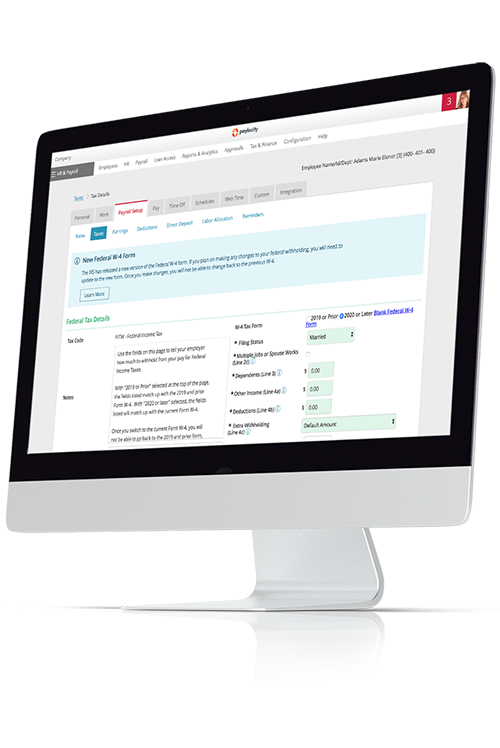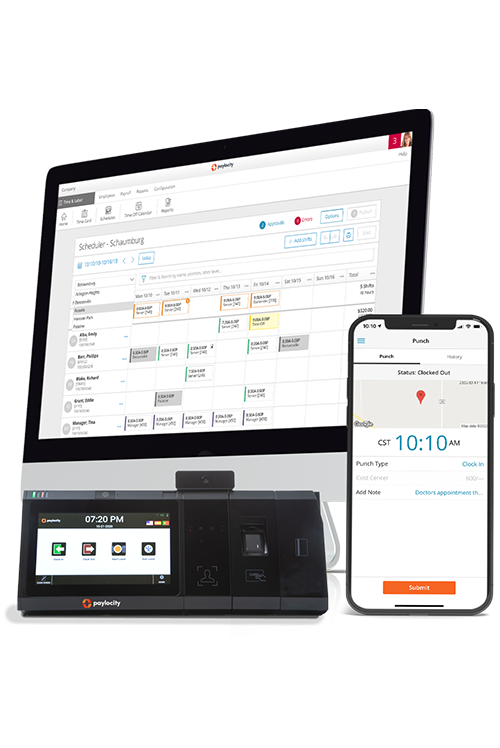
Navigating State PFML Taxes: What Employers Need to Know
What is Paid Family and Medical Leave?
Paid family and medical leave (PFML) is a paid leave policy that allows workers time off for qualifying medical or family-related reasons, such as bonding with a new child, recovering from a serious health condition, or caring for a loved one with a serious health condition.
Similar to paid sick leave and other types of paid time off (PTO), there’s no national comprehensive paid family and medical leave program. Several state legislatures, however, have recently enacted a family medical leave act, usually paid by a payroll tax on earned wages.
Most of these state family and medical leave laws provide at least 12 weeks of benefits and generally cover all, or nearly all, private sector employees. Some state programs, though, also cover state and local government employees.
Eligibility for paid benefits is typically determined by meeting minimum requirements, such as the amount of earned wages, length of employment, or some combination of factors.
PFML vs. FMLA
The Family Medical Leave Act (FMLA) is a federal law that provides employees with up to 12 weeks of protected leave for eligible health or family reasons. Unlike PFML, however, FMLA leave is not paid, though some states base their PFML eligibility requirements on FMLA standards. For example, some PFML programs use the FMLA definition of “serious health condition” when determining medical leave eligibility.
Key Takeaways
- Paid family and medical leave (PFML) programs provide paid time off for medical or family-related reasons, with requirements and funding varying by state.
- Unlike the federal Family Medical Leave Act (FMLA), PFML is state-administered, often funded through payroll taxes, and may allow private plan alternatives if standards are met.
- Employers and employees should understand the state's PFML rules, including contribution obligations, eligibility criteria, and compliance deadlines.
Why is PFML Important?
PFML policies support workers and their families, helping employees balance work demands with their personal health and family’s well-being. Moreover, providing such leave can help employees recover and return to work more quickly, minimizing financial insecurity for employers.
Which States Have Family Medical Leave Laws?
Currently, 14 jurisdictions (13 states and Washington D.C.) have an active or soon-to-be active PFML program funded by payroll taxes. Plan requirements vary by state, but most allow employers special permission to provide benefits through a private plan, so long as those benefits meet strict requirements guaranteeing they’re at least as generous as state-funded plan benefits.
Penalties for failing to comply with state-mandated standards (e.g., minimum employee headcount, remitting amounts and filing returns on time, providing program information to workers, etc.) can result in fines ranging from $500 to $4,000 total or $250 per violation, civil action, and possible imprisonment.
PFML Federal or State Trends
The number of states with a tax-funded paid family and medical leave program continually expands. Delaware and Maine were the most recent states to add such a program in January 2025. Minnesota is scheduled to debut their new program in 2026, and Maryland’s new program will begin collecting contributions in January 2027.
A recent trend among existing programs has been the expansion of the definition of “family member.” Most states define family as spouses and immediate relatives (e.g., parents, children, siblings, etc.), though some have started including domestic partners, extended relatives, and “chosen” family members.
State Paid Medical and Paid Family Leave Taxes
Most state-based PFML programs are funded by a mandatory PFML tax from employers, employees, or both. New Hampshire and Vermont, however, have programs where participation is voluntary.
When mandatory, these tax “contributions” are typically a percentage of each employee’s earned wages up to a set wage base limit, though rates and limit amounts can change from year to year or based on new legislation.
Heads Up!
In January 2025, the IRS announced new guidance clarifying the federal tax treatment of state PFML contributions and benefits, effective immediately. Calendar year 2025, however, has been designated as a transition year to allow employers to make any necessary payroll and reporting adjustments.
- Employer contributions are deductible and generally excluded from Federal Income Contributions Act (FICA) and Federal Unemployment Tax Act (FUTA) taxes.
- Employee contributions and any employer-provided payments covering a portion of an employee's required contributions remain subject to federal income tax withholding (FITW).
- Paid family leave benefits are taxable but not treated as wages for income or employment tax purposes and must be reported by the state on Form 1099, not Form W-2.
- The employer-funded portion of paid medical leave benefits is included in employees' gross income and subject to FICA taxes, while the employee-funded portion is excluded from income and not taxed.

2025 State PFML Taxes
|
Jurisdiction |
Employer or Employee Contributions |
PFML Tax Rates |
|
Employees only |
1.2% |
|
|
Both |
|
|
|
Employees only |
0.50% |
|
|
Both |
0.80% (0.32% for parental leave; 0.40% for family leave; 0.08% for caregiver leave) | |
|
Employers only |
0.75% |
|
|
Both |
|
|
|
|
Both* |
No more than 1.20%, split evenly between employers and employees |
|
Both |
|
|
|
Both** |
0.70% (split evenly between employers and employees, though employers may contribute a greater portion if they want) |
|
|
Employees only |
0.33%
|
|
|
Employees only |
0.388% |
|
|
Both
|
|
|
|
Employees only |
1.30% (provided by the Temporary Disability Insurance tax paid by employees) |
|
|
Both
|
|
*Contribution collections will begin January 1, 2027.
**Contribution collections will begin January 1, 2026.
PFML Obligations and Considerations
Employers are usually responsible for managing all collected contributions and informing employees about the state’s program and their rights. Some states also allow employers to share or cover part of an employee’s contribution.
In addition to the resulting tax implications, employers should prioritize being informed of all program requirements, including:
- Deadlines for submitting tax payments and filing tax returns
- Minimum benefit standards for private plans
- Definitions for key program terms (e.g., employee, family member, serious health condition, etc.)
- Current employee headcount and how it impacts PFML compliance
- Tracking how many weeks each employee has worked
Meanwhile, employees must ensure they’re familiar with program requirements to meet PFML eligibility standards, properly submit claims, and understand how the benefits will impact their financial situation. Some states, for example, provide a PFML calculator for estimating how much an employee may receive while on leave.
To ensure a smooth work transition, employees should also:
- Inform their employer of the leave
- Provide any requested documentation (e.g., their PFML application, medical documents, adoption forms, etc.)
- Communicate with supervisors and peers about current assignments or responsibilities
- Set an expected return date
Ensure Payroll Tax Compliance with Paylocity
Keeping up with PFML tax rates and state standards is a constant balancing act. One missed contribution or overlooked requirement can snowball into expensive penalties and administrative headaches. That’s where modern HR and payroll software, like Paylocity, can lighten the load.
Paylocity simplifies compliance with features such as:
- Default configurations and overrides to automate manual steps while ensuring completeness of payroll data.
- Automatic payroll audits that safeguard and call out any unexpected data entries.
- Tax geolocation tools to ensure each employee is set up to pay the correct state and local taxes.
Request a demo today and see how much easier payroll taxes can be with Paylocity.




